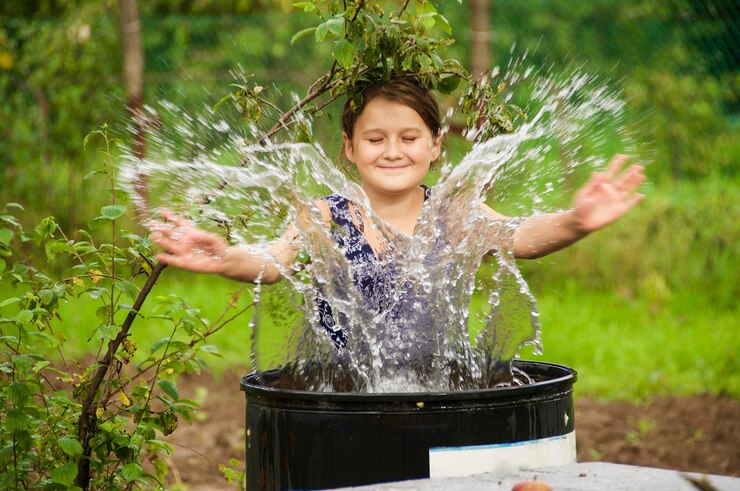Agua dulce a Spanish term meaning “freshwater” or literally “sweet water,” refers to naturally occurring water with low concentrations of salts and other dissolved solids. Unlike saltwater from oceans and seas, agua dulce is vital for human consumption, agriculture, industry, and the survival of most terrestrial life. Found in rivers, lakes, glaciers, underground aquifers, and even the atmosphere, this precious resource supports ecosystems and sustains civilizations across the globe.
In this article, we will explore what agua dulce is, its sources, why it matters, the growing threats it faces, and what can be done to preserve it.
What is Agua Dulce?
Agua dulce is any naturally occurring water that has low salinity, making it suitable for drinking, farming, and other essential human uses. It typically contains less than 1,000 milligrams of dissolved salts per liter, which distinguishes it from brackish or saltwater.
Freshwater can be found in various forms:
-
Surface water: Rivers, streams, lakes, and ponds.
-
Groundwater: Aquifers and wells.
-
Frozen water: Glaciers and polar ice caps.
-
Atmospheric water: Water vapor, clouds, and precipitation.
Although over 70% of the Earth is covered in water, only about 2.5% of it is freshwater. Even more striking is that just 0.3% of this freshwater is accessible in lakes, rivers, and swamps. The rest is locked in glaciers or stored underground.
The Role of Agua Dulce in Ecosystems
Agua dulce plays a critical role in maintaining biodiversity. Freshwater ecosystems, such as wetlands, rivers, and lakes, are home to thousands of unique species of fish, amphibians, plants, and microorganisms. Despite covering only about 1% of the Earth’s surface, freshwater habitats support over 10% of all known species.
These ecosystems also provide ecosystem services like:
-
Water purification
-
Flood regulation
-
Nutrient cycling
-
Soil formation
-
Climate regulation
From the Amazon Basin to the Great Lakes of North America, agua dulce is the lifeline of countless natural communities.
Human Dependence on Agua Dulce
Humans have depended on freshwater for thousands of years. Early civilizations thrived near rivers such as the Nile, Tigris, Euphrates, and Indus. Even today, major cities are often located near freshwater sources for practical reasons.
Here are the primary uses of agua dulce today:
-
Drinking water: Essential for survival and health.
-
Agriculture: Irrigation accounts for nearly 70% of global freshwater use.
-
Industry: Used in manufacturing, cooling, and processing.
-
Sanitation: Needed for cleaning, hygiene, and sewage systems.
-
Hydropower: Water is a renewable source of electricity through dams and turbines.
The quality and availability of freshwater directly affect public health, economic development, and food security.
Threats to Agua Dulce Resources
Despite its importance, agua dulce is under serious threat from multiple human activities and environmental changes.
1. Pollution
Industrial discharge, agricultural runoff, and untreated sewage are some of the leading causes of freshwater pollution. Harmful chemicals like pesticides, heavy metals, and nitrates can contaminate drinking water and kill aquatic life.
2. Overuse
Excessive withdrawal of freshwater for agriculture and urban use has led to the depletion of rivers and aquifers. In places like India and parts of the United States, water tables are dropping at alarming rates.
3. Climate Change
Changing weather patterns and global warming are altering rainfall distribution, causing droughts in some regions and floods in others. Melting glaciers also threaten the long-term supply of agua dulce to billions of people.
4. Deforestation and Urbanization
These activities disrupt the natural water cycle by reducing infiltration and increasing surface runoff, which leads to soil erosion, reduced groundwater recharge, and increased pollution.
5. Invasive Species
In many freshwater systems, invasive plants and animals displace native species and alter the ecosystem dynamics, often leading to ecological collapse.
Global Water Scarcity and the Future of Agua Dulce
The United Nations estimates that by 2025, two-thirds of the global population could be living under water-stressed conditions. While freshwater scarcity has always been a local or regional issue, it is increasingly becoming a global concern.
Rapid urbanization, population growth, and industrial expansion are pushing the limits of existing freshwater supplies. Major cities like Cape Town, São Paulo, and even Los Angeles have come close to “Day Zero” scenarios where municipal water runs out.
Some regions are more vulnerable than others:
-
Sub-Saharan Africa: Faces chronic water shortages due to poor infrastructure.
-
The Middle East and North Africa: Has some of the lowest per capita freshwater availability.
-
South Asia: Overdependence on seasonal monsoons and glacial melt.
Sustainable Solutions for Agua Dulce Conservation
Securing the future of agua dulce will require a combination of policy changes, technological innovations, and community efforts.
1. Water Conservation Practices
Encouraging efficient water use through public awareness, leak detection, and reduced wastage is a critical step. Low-flow fixtures, rainwater harvesting, and drip irrigation are simple but effective solutions.
2. Pollution Control
Regulations to control industrial discharge, promote sustainable farming, and treat wastewater are essential for keeping freshwater clean.
3. Protecting Ecosystems
Conserving wetlands, forests, and riparian zones helps maintain the natural water cycle and safeguards biodiversity.
4. Desalination and Recycling
While desalination is energy-intensive, it can provide freshwater in arid regions. Meanwhile, wastewater recycling and greywater reuse can supplement water supply in urban areas.
5. Transboundary Cooperation
Rivers often cross national borders, making shared management crucial. International treaties and river basin commissions help ensure fair and sustainable use.
Cultural and Historical Significance of Agua Dulce
Beyond its practical uses, agua dulce holds symbolic and spiritual meaning in many cultures. In indigenous traditions, freshwater sources like springs and rivers are sacred, representing life, renewal, and healing.
In literature and art, agua dulce is often a metaphor for purity, clarity, and emotional depth. It is no coincidence that terms like “sweet water” evoke feelings of serenity and vitality.
Even place names reflect the reverence for agua dulce. Towns likein California and Texas owe their names to local freshwater sources that were vital in otherwise dry landscapes.
Conclusion
Agua dulce may be one of the planet’s most undervalued resources. Though abundant in some areas, it is scarce and endangered in many others. Ensuring its availability and quality for future generations requires collective responsibility, innovation, and a renewed respect for the water that sustains us.
Whether we call it freshwater, sweet water, or agua dulce, its importance remains the same — it is the essence of life on Earth.










